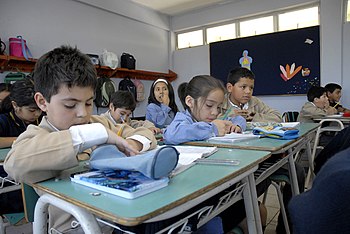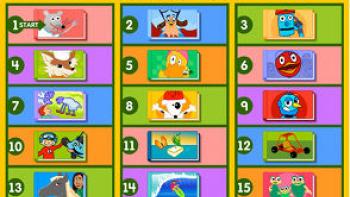
Easy to setup
An easy way to introduce value to a room is to create a place value game. Each box should be labeled with the place value it represents. This could include thousands, hundreds, tens or ones. Next, draw number cards on the tape to represent the numbers.
This game is suitable for children of all ages and abilities. It helps children connect abstract numbers to the real world. It helps pupils to build confidence in visualizing numbers and improve their mental calculation skills.
Fun to play
This place value game is a great way to introduce children to number placement. Each player selects a number and matches it to the number on a mat. The challenge increases in complexity as kids add decimal numbers to the mix. Children can use counters to count school days, increasing the number as the year goes on.

This is a fun game that gets students to get up off their desks and begin working on place values. They then use a key to determine the letter corresponding to each number. You can play this game with a friend, a partner, or as a small group.
Helps children understand concept of value
The best way to teach children place value is to use money to illustrate the concept. Most children can understand that ten pennies are equal to one dime. So you can use that concept for explaining place value. You can also use money as a visual teaching tool to teach groups of values.
When using the four operations on large quantities, place value is something children should learn. It helps children understand why the four operations are performed and makes it easier to determine the answer. Methods such as the bus stop, column, and column methods can be used by children to help them solve problems. They all require looking at each digit individually and understanding the effect of place value on the final result.
Ideal for older children
This place value game demands concentration and speed. You can also order the pins for older kids to create the highest possible number. A deck of playing cards, UNO, WILD, and number cards are required. It works best when you have larger numbers. After all, you're trying to get your students to add and subtract digits.

You can either set up a large area of play or use a grid with random multidigit numbers. Students can use a prompt verbally to have them hop to the correct number. They can mix it up by hopping on one side or crawling on the other. You can introduce this place value game in a summer-themed unit or you can do it on its own.
Great for home practice
Place value games can be a great way for students to reinforce concepts such as place value. They also help students recognize and memorize the numbers and their relationships. This game also reinforces the concept that numbers on the left of a number line are smaller than those on the right. The student must cover the number in center as they move around the board.
A place value game can also be used at home. With chalk, a large playing area can be created. A grid of random multidigit numbers can then be added. Students can use verbal prompts to practice jumping to the correct number. Students can also use pom poms to represent tens or ones, or wooden craft sticks for numbers.
FAQ
What is a Trade School?
For those who have not been able to get a degree at traditional higher education institutions, trade schools offer an alternative route. They offer career-focused programs which prepare students to pursue specific careers. These programs usually require two years of coursework. Students who enroll in them then move on to a paid apprenticeship program. Here they learn a job skill, and also receive training. Trade schools can be vocational schools, technical colleges or community colleges. Associate degrees are offered by some trade schools.
What is the difference between a college and a university
A university is an institution that offers higher education. It offers both undergraduate and graduate courses in many fields.
A college is typically smaller and less well-known than a university. While it may offer fewer programs, many colleges have their own specialist departments.
Who can homeschool?
Anyone can homeschool. There are no required qualifications.
Parents who have completed high school can teach their children. Many parents choose to teach their children as they go to college.
Parents can learn to teach children from parents with less formal education.
Parents can become certified teachers after completing certain requirements. These requirements may vary by state.
Some states require all homeschooled students to complete a test before graduation. Others do not.
Parents who want to homeschool their children must register them with the local school district.
This involves filling out paperwork, and submitting it back to the school board.
After registering, parents will be able to enroll their child in either public or privately-funded schools.
A few states allow parents to homeschool without registering their children with the government.
If you live within one of these states, it is your responsibility to ensure that your children fulfill the state's mandatory attendance law.
How much does homeschooling cost?
There are no set fees for homeschooling. Some families charge between $0-$20 per lesson. Others offer their services free of charge.
However, homeschooling requires dedication and commitment. Parents should have enough time for their children.
They also need to have access book, supplies, books, and other learning resources. Homeschoolers are often required to attend community events and participate in programs that complement their curriculum.
Parents must think about the cost of transport, tutoring, and other extracurricular activities.
Homeschoolers should also plan ahead for vacations, field trips, and special occasions.
Statistics
- They are more likely to graduate high school (25%) and finish college (116%). (habitatbroward.org)
- They are also 25% more likely to graduate from high school and have higher math and reading scores, with fewer behavioral problems,” according to research at the University of Tennessee. (habitatbroward.org)
- Data from the Department of Education reveal that, among 2008 college graduates, 92.8 percent of humanities majors have voted at least once since finishing school. (bostonreview.net)
- And, within ten years of graduation, 44.1 percent of 1993 humanities graduates had written to public officials, compared to 30.1 percent of STEM majors. (bostonreview.net)
- “Children of homeowners are 116% more likely to graduate from college than children of renters of the same age, race, and income. (habitatbroward.org)
External Links
How To
How do I enroll in homeschooling?
Homeschooling is a method of teaching children subjects at home. This includes reading books and watching videos, performing exercises, listening to music, and learning through various methods. Because students can learn at their own pace as well, homeschooling is one of most effective learning methods. It allows them to develop skills such a problem-solving, critical thought, self-discipline. communication, and social skills.
Many parents want to educate their kids at home. In this case, they can opt for homeschooling, which allows them to dedicate their time and energy to their children's education without having to worry about finding someone to take care of their children while they go to work.
There are many benefits associated with homeschooling; some of these include developing the ability to think critically and creatively, increasing their knowledge base, improving their language skills, developing their personal identity, becoming independent learners, and having greater control over their life than if they were attending school.
The main objective of homeschooling is to provide quality education to children so they can become successful adults. Before you can start homeschooling, there are some things that you need to do. One of these requirements is to determine whether your child is eligible to attend public or private schools. If you decide to start homeschooling, you should consider what kind of curriculum you will use. You have many options when it comes to curricula online. These can be customized to suit your needs, budget and level of expertise. These include Waldorf, Montessori and Waldorf as well as Reggio Emilia, Charlotte Mason and unschooling. A second requirement is that you ensure you have the right resources in order to teach your child. This includes buying textbooks, educational materials and computers. These items can either be bought online or at local stores.
Once you've completed the above steps successfully, you can register yourself as a parent who homeschools. For guidance, it is best to contact the state department of education. They will help you fill out forms and advise you on how to start homeschooling.